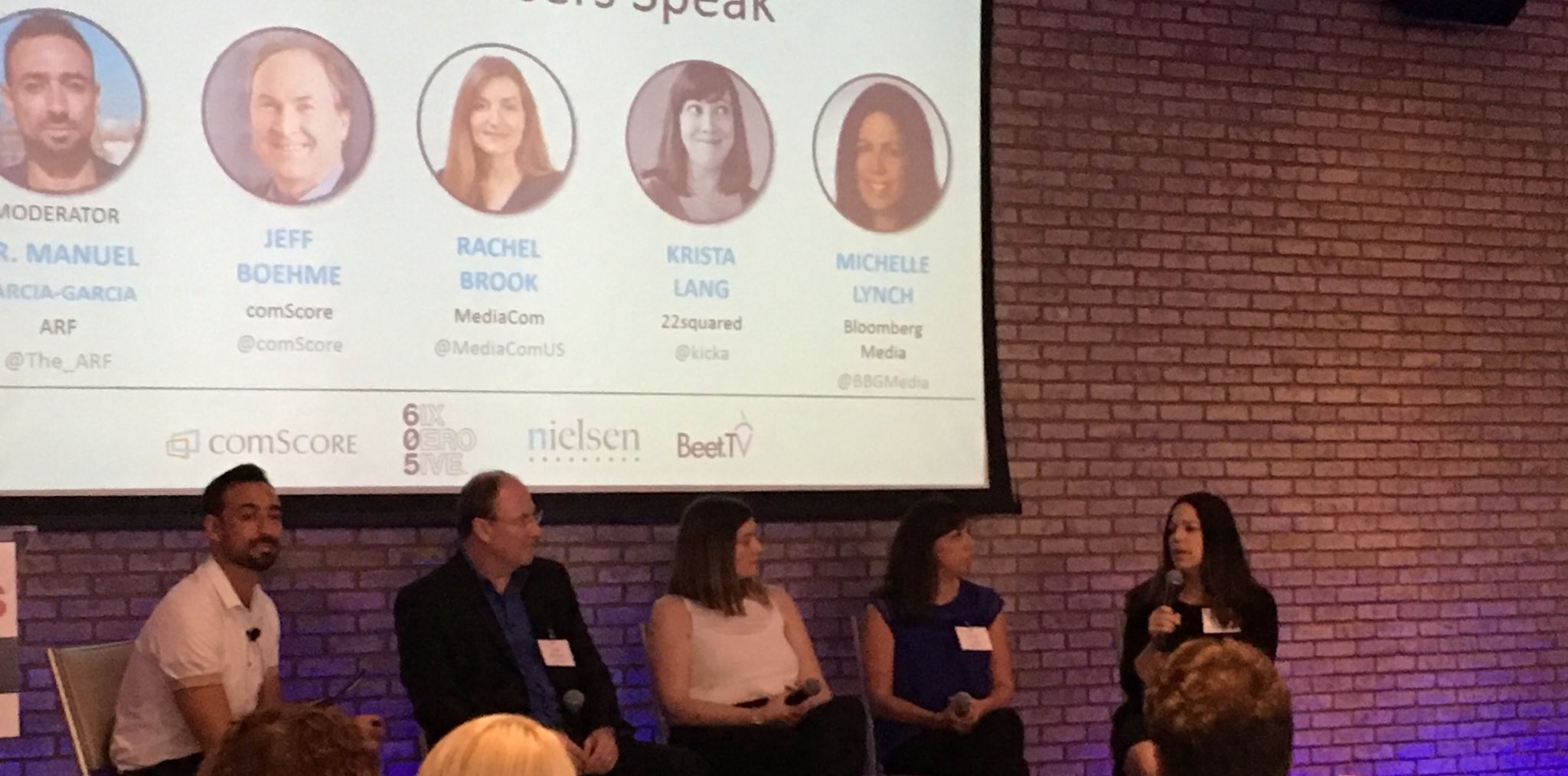August 10, 2017
As John Wanamaker famously said: “Half the money I spend on advertising is wasted; the trouble is, I don’t know which half.” The digital revolution and rapidly evolving data technologies have taken marketers further than ever towards solving that puzzle – while also unleashing new market forces that raise new possibilities.
A group of media and marketing leaders met recently in New York at the Cynopsis Measurement and Data Conference to focus on this changing landscape. From creating new measurement standards to solving for video’s reach across platforms, a full day of panels examined key questions and emerging answers.

Bloomberg Media Global Head of Data Science and Insights Michelle Lynn speaks on a panel at the Cynopsis Measurement and Data Conference in New York, August 3, 2017. Photo: Jen Robinson/Bloomberg
Bloomberg Media’s Global Head of Data Science and Insights, Michelle Lynn, joined a panel including top executives from comScore, MediaCom and 22squared to talk about what agencies and brands need from transparent measurement as well as which metrics are most important to them.
For Lynn, the ultimate measure is whether marketing campaigns generate real business results. “Awareness is good,” she said, “but it’s not a business outcome.” Linking advertising performance to, for example, business revenue growth, or an increase in units shipped, is a more meaningful measure than how many people might have clicked on an ad.
To help shift paradigms in that direction, Lynn suggested taking a real-time approach to defining metrics that matter. When a campaign is live, “we see how our audience is engaging, and because we have a deep understanding of who they are and what motivates them, we’re able to use that to increase effectiveness – whether it matches the original KPI exactly or not,” she said. When key performance indicators can develop across a campaign, brands are more likely to make significant connections with the audiences of most consequence to them.
Lynn also constantly seeks opportunities to gain novel insights. One example comes from the integrated performance analytics her team employs. “It’s exciting to see panels working together,” she said – for example, seeing audiences who watch television engaging in search. “It allows you to make connections you couldn’t have a few years ago, and assess effectiveness in a different way,” she added.
Another example comes from the way a diversity of perspectives helps original measurement to emerge. Lynn’s team is spread over every global region and includes data scientists as well as more traditional market research pros, fostering a potent mix of ideas and capabilities. “Some of the most creative ideas come from the data scientists – new ways to get at things, or what to look at,” she said.
So what’s Lynn’s biggest concern? As data sets get bigger and powerful technology tools become the currency of measurement, protecting data privacy is on her mind. “Researchers need to prepare for the future – now,” she said.
Read next: Here’s how AI is already shaping the media business